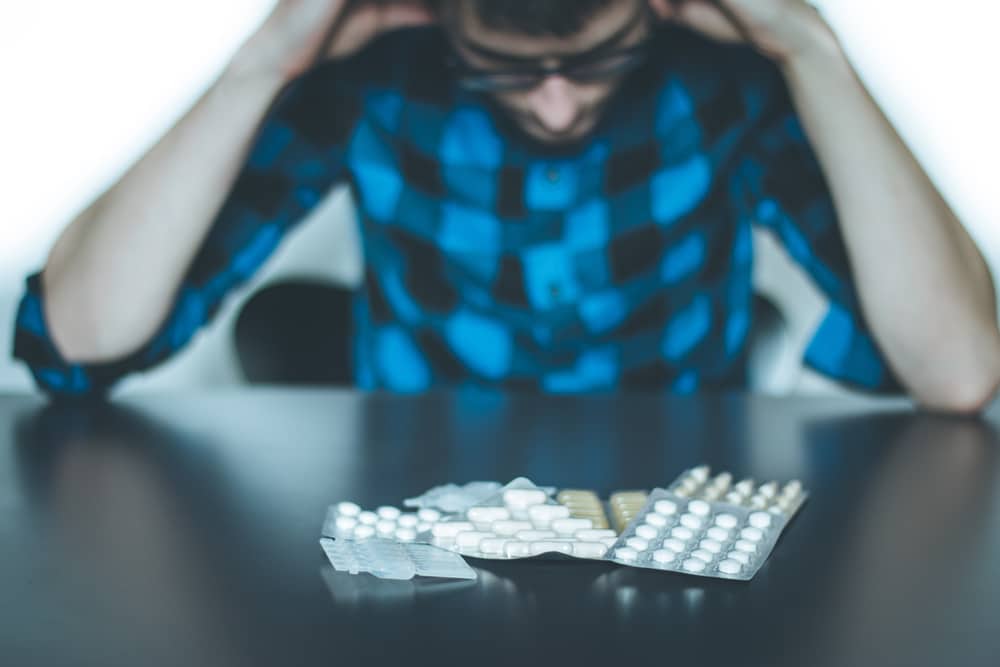
The Face of Millennials And Drugs
Every generation has its trends, including trends with drug use, millennials and their drugs are no different. From bootlegging in the 1920s as a response to the prohibition to the federal government declaring the war on drugs in the 1970s, substance abuse has always been widespread in modern American life.
How has growing up in this environment affected the way the next generation of leaders are consuming drugs as young adults? What does millennials and drug abuse look like?
Millennials are defined as people born between 1981 and 1996. Currently, these individuals are in their early to mid-twenties to their late thirties. Just as different drugs have become popular at different times, different generations have had different substances of choice. The question now becomes, how has the framework of conspicuous drug use shaped the way that the millennial generation uses legal and illegal substances? Also, how high is the stat between millennials and drug overdose?
Contact us today at 855-299-4472 to learn about the rehab treatment services that we offer!
Millennials and Their Drug
Marijuana is the most widely-used illicit drug in the United States and the rest of the world making it one of the millennial addictions. Recreational marijuana is legal in Colorado, Washington, Alaska, Oregon, California, Nevada, Maine, and Massachusetts. Medical marijuana is legal in 20 additional states. Marijuana remains illegal at the federal level though.
57% of Americans are in favor of the full legalization of marijuana. Also, over half of the country admitted that they have tried marijuana at least once as of 2016. It appears to be just a matter of time before marijuana joins the list of legal drugs that are regulated by the government.
Speaking of regulation, alcohol is the most prevalently used and abused drug in the world. This is because alcohol is legal in most countries making it another one of the common millennial addictions. According to the 2015 National Survey on Drug Use and Health, 86.4% of people ages 18 or older have drunk alcohol before. Of that 86.4%, 70.1% of people reported that they imbibed in the last year.
Binge (heavy) drinking is a problem in many parts of the world, particularly in the United States. In fact, 15.1 million American adults have been diagnosed with an Alcohol Use Disorder (AUD) before as of 2015. This means that 15.1 million American victims of alcohol abuse were either unwilling or unable to properly control their alcohol usage. Of those 15.1 million Americans, 9.8 million were men and 5.3 million were women.
The Effect of Adult Alcohol and Drug Use on Millennials and Their Drug Use
Regular alcohol or drug use within a household quickly desensitizes any child or adolescent. As a result, these children and adolescents are more likely to use and abuse drugs themselves once they leave the household.
Frequent alcohol and drug use in the household will also likely increase the rates of teenage drug overdose. Plus, illegal drug use is becoming more and more acceptable. This will likely raise millennials and drug overdose rates as well. This is especially true since alcohol and marijuana use is at an all-time high.
Why Are Millennials And Drug Abuse Rates Increasing?
Millennial addictions had seen a tremendous increased for many reasons. One of these reasons is that many millennials are stressed and depressed. This is because many of them were forced to take on thousands of dollars of debt to pay for their college degrees. College degrees aren’t worth as much as they were for the generations of people before them.
To make matters worse, American millennials came up during a time of economic recession. Thus, when millennials entered the job market after college, it was much harder to break into. All of these factors have caused many millennials to be financially unstable and depressed. As a result, millennials and drug abuse correlation increased to cope with these pressures.
On top of all that, alcohol and drug use aren’t as frowned upon as it used to be. As a result, millennials and their drug of choice are more often seen in Americans that came before them, and with less judgment coming their way for doing so.
Drugs Popular With Millennials
Similar to the generations before them, millennials use alcohol and marijuana at high rates. Still, despite heavy alcohol and marijuana use taking place across multiple generations, prescription opioids are the drugs of choice for millennials. In fact, as much as 12% of millennials abuse painkillers. This is far more than the less than 8% of Boomers and Gen Xers that abuse painkillers.
As more and more millennials are using opioid painkillers, abuse and addiction rates of opioid painkillers are also growing. As a result, the risk of millennials and drug overdosing on opioid painkillers is growing as well.
How Millennial Use of Prescription Opioids Has Helped Fuel the Opioid Epidemic

Approximately 21.5 million Americans, 12 years of age or older, have been diagnosed with a substance use disorder before. Of those 21.5 million Americans, 1.9 million of them were abusing prescription painkillers. This is part of the reason why millennials and drug relationship is increasing.
In fact, research shows that approximately 4.3 million people, 12 years of age or older, have used pain pills for non-medical purposes before. Of those 4.3 million people, 2.9 million were adults age 26 or older.
When it comes to prescription drug use, a study done by the Mayo Clinic states that almost 70% of Americans take at least one prescription drug, while more than half of the country’s adults take two or more prescription medications. The most used categories of prescribed drugs in the United States are opioids, depressants, and stimulants.
20% of Americans that were prescribed pills were found to be on five or more concurrent medications. Of that 20%, 13% reported having at least one active opioid prescription.
In 2015, the total number of individual prescription medications filled at pharmacies was just over 4 billion. That’s nearly 13 prescriptions for every man, woman, and child in the United States according to the 2015 census.
If you are looking for an insurance-covered rehab center in Florida, please contact us here to go over your health insurance.
How the Opioid Epidemic Has Caused Young Adult and Teenage Overdose Rates to Increase
Because opioid prescription pills are one of the drugs popular with millennials and the generation behind them, there has been a sharp increase in young adult and teenage drug overdose and death rates. In fact, according to a study done in the Journal of Studies on Alcohol and Drugs, the drug overdose death rates for young adults and teens ages 15-24 increased by 19.75% from 2006 to 2015. Of those drug overdose and deaths, the majority of them were due to prescription opioid abuse.
Prescription opioids are the drug of choice for millennial addictions and the generation after them because of how easy it is to now access them. This is due to the over-prescribing of opioids to patients whenever they feel any sort of pain.
Prescription Pills: Gateway Drugs?

Recreational prescription pill use is expected to increase over the course of the next decade. This means that the rate of millennials and drug overdose rates will likely increase as well. In fact, many college students use stimulants like Adderall and Ritalin to keep on task in class, stay up all night studying, and lose weight. Countless other teens and adults use depressants such as Xanax and Valium to combat anxiety, reduce nervousness in social situations, or to simply escape reality.
Whether millennials actually prefer the illicit substances that are more commonly used by previous generations or not, they clearly perceive prescription drugs such as prescription opioids as the easier to obtain and safer drug option. After all, they are given out to patients by doctors who are trusted, authority figures.
Despite this belief, there is often little difference in safety between abusing a prescription drug and abusing a comparable illicit substance. In fact, those who take prescription medications for non-medical purposes are five times more likely to develop a substance abuse problem at some point in their lives.
“Those who take prescription medication for non-medical purposes are five times more likely to develop a substance abuse problem.”
Some of the more commonly abused prescription opioids are:
- Codeine: Prescribed to treat mild pain, sometimes for coughs and severe diarrhea
- Hydrocodone (Vicodin, etc.): Prescribed for pain in general, associated with pain from injuries of a physical or dental nature
- Morphine: Given to patients experiencing severe pain following surgeries
- Oxycodone (OxyContin, Percocet, etc.): Used for moderate to severe pain over a long-term period
Behavioral Health Centers is Here to Help You Overcome Your Drug Addiction
Millions of adults in the United States regularly take part in some sort of prescription medication abuse, and overdoses are more frequent than ever. If you or someone you know has lost control of a prescription pill or illicit drug use habit, help is available.
Our Port St. Lucie treatment center can help you find your way back to the life you had before substance abuse.
We are a comprehensive recovery center located in scenic North Palm Beach, FL, and we specialize in the treatment of drug and alcohol dependence, mental illness, and dual diagnosis.
To learn more about us and the substance abuse treatment services that we offer, contact us today!
References:
www.pewresearch.org/daily-number/marijuana-use-increased-over-the-last-decade/
www.niaaa.nih.gov/alcohol-health/overview-alcohol-consumption/alcohol-facts-and-statistics
www.asam.org/docs/default-source/advocacy/opioid-addiction-disease-facts-figures.pdf
www.samhsa.gov/data/sites/default/files/NSDUH-FRR1-2014/NSDUH-FRR1-2014.pdf
www.cbsnews.com/news/study-shows-70-percent-of-americans-take-prescription-drugs/
kff.org/other/state-indicator/total-retail-rx-drugs/?currentTimeframe





